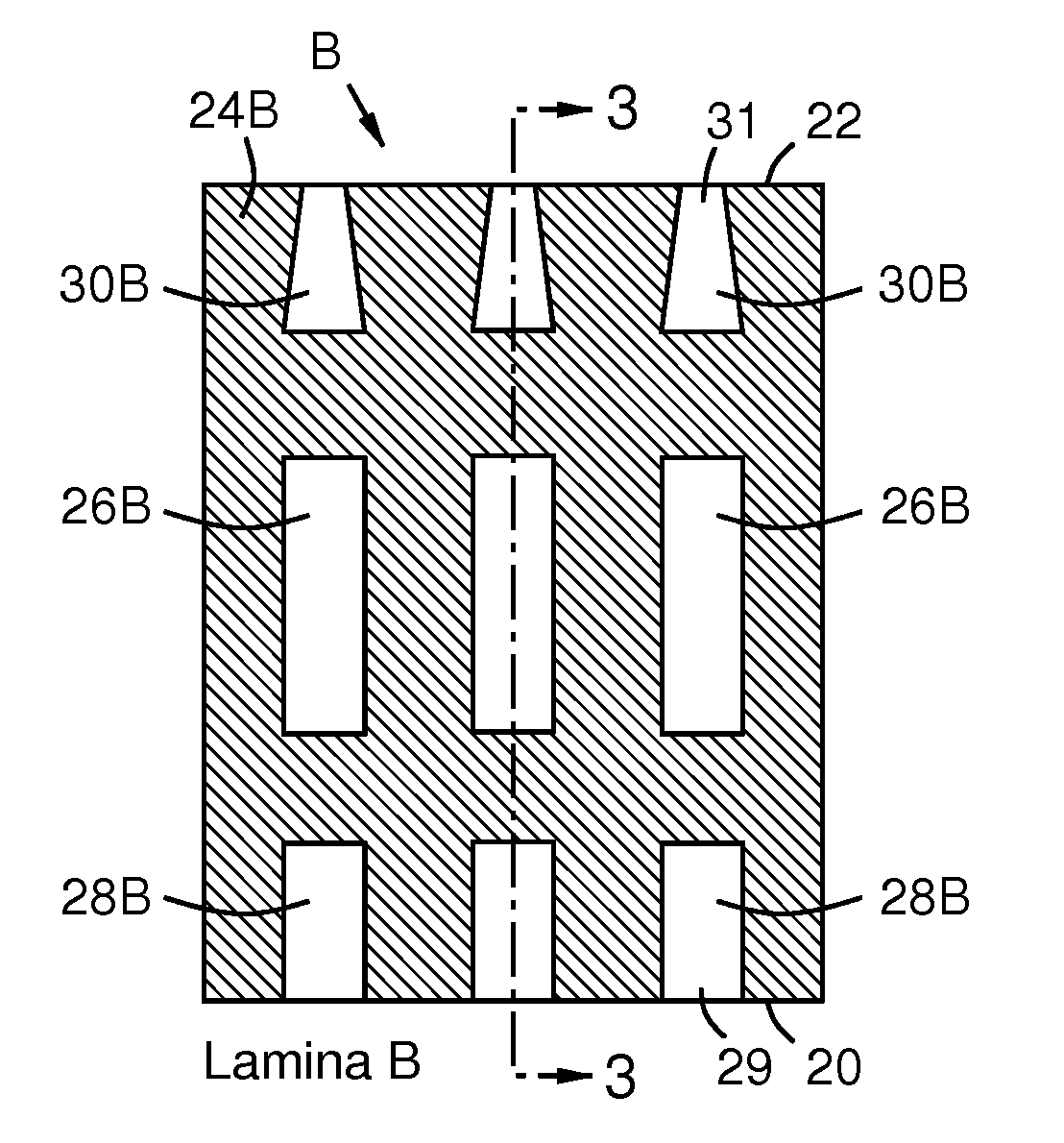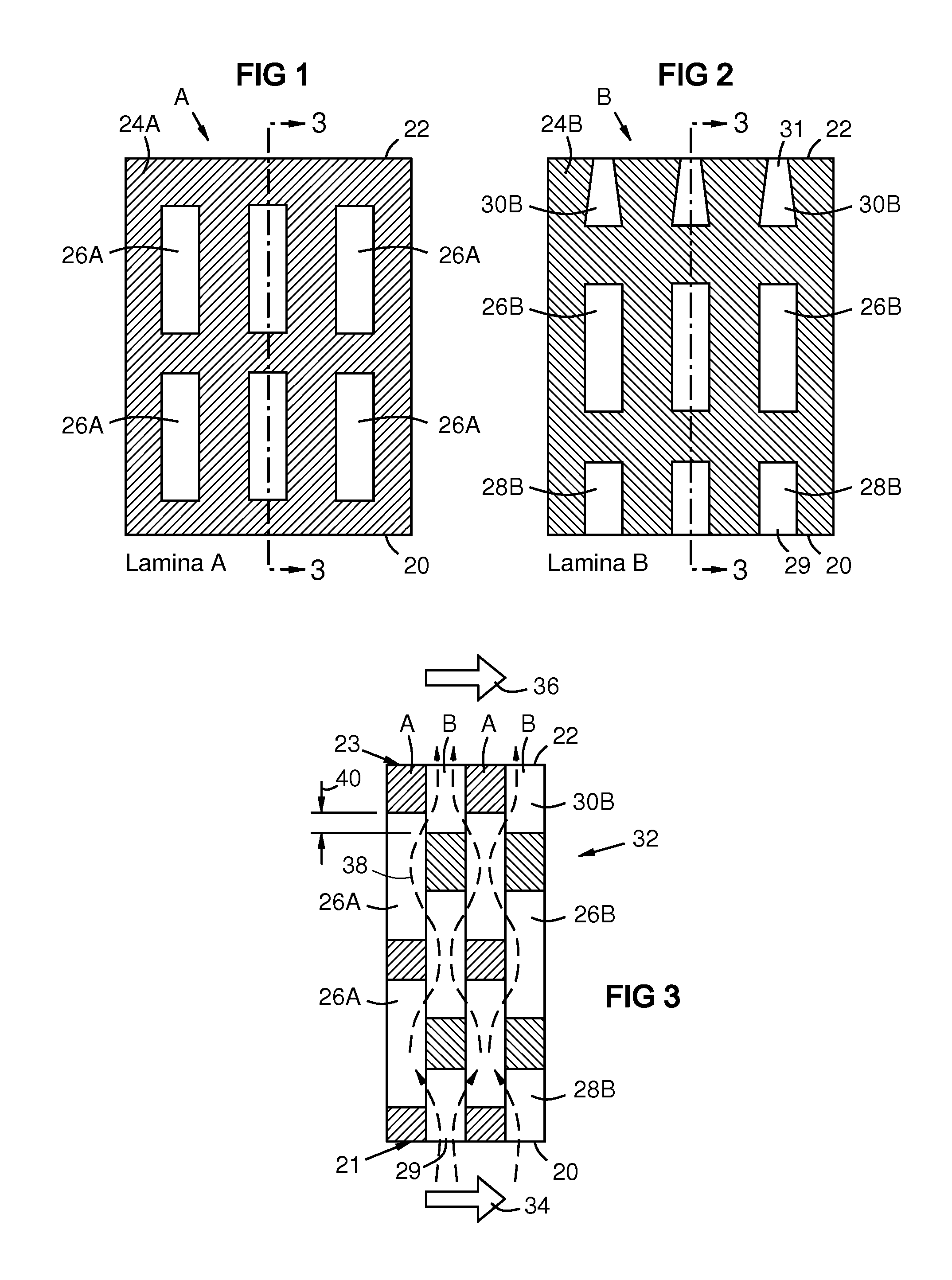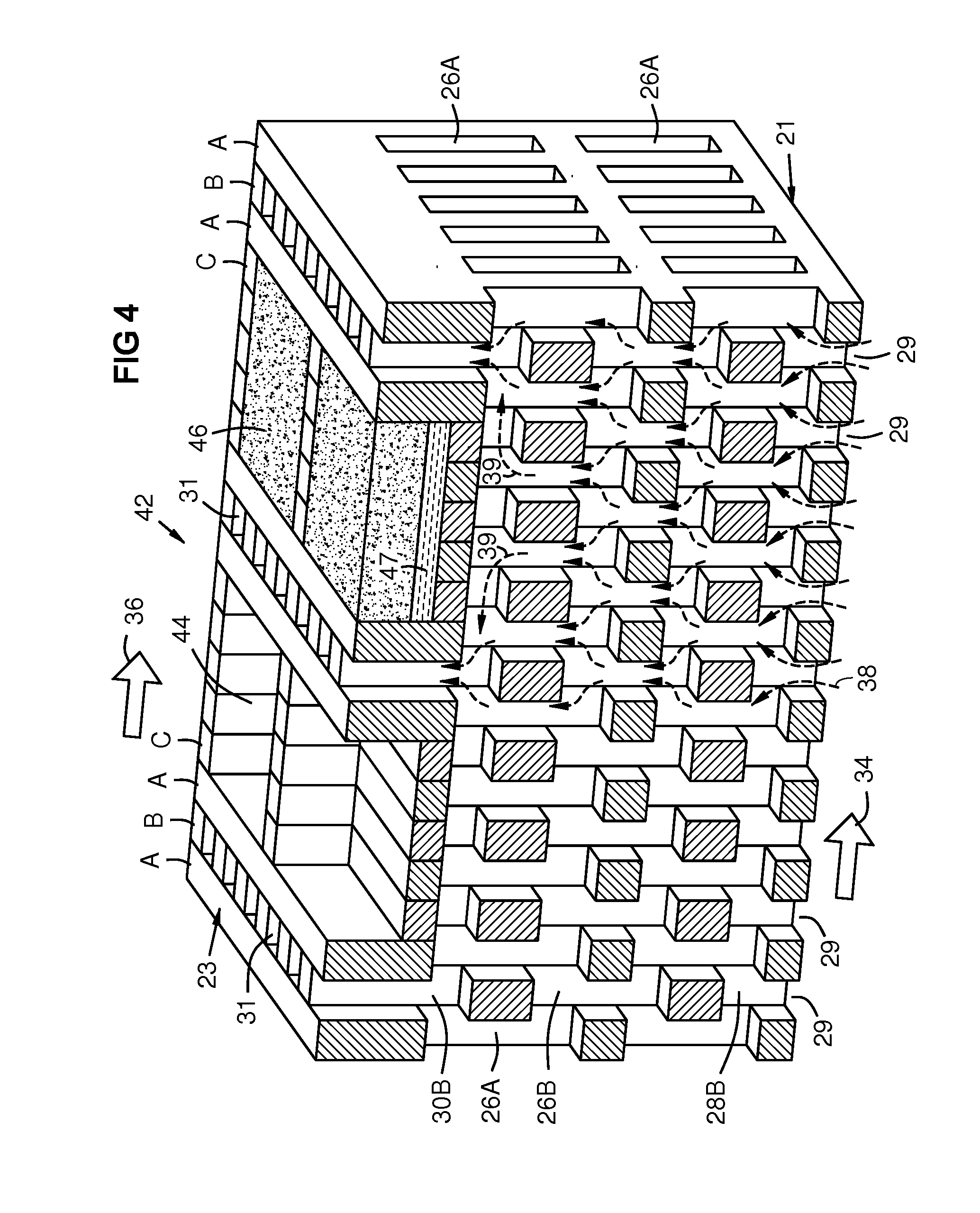Discreetly Defined Porous Wall Structure for Transpirational Cooling
a porous wall and discretely defined technology, applied in the direction of engine manufacturing, additive manufacturing apparatus, thin material processing, etc., can solve the problems of reducing the efficiency of the machine, randomly porous materials are generally not suitable, fibrous structures are not inherently geometrically rigid,
- Summary
- Abstract
- Description
- Claims
- Application Information
AI Technical Summary
Problems solved by technology
Method used
Image
Examples
embodiment 70
[0018]FIG. 5 shows a 3-D lattice embodiment 70 of the invention, composed of nodes 72 and links 74. It may have geometry like that of a crystal lattice model, and may have a scale of 0.1-5.0 mm spacing per unit cell in one embodiment (a node and its directly attached links). This forms a meta-material with characteristics determined by the lattice geometry, scale, and thicknesses of the nodes and links. Rigidity can be controlled in part by the lattice geometry. For example, in FIG. 5 rigidity and flow restriction can be increased by adding vertical links between nodes lacking them (exemplified by nodes 76, 77, 78) and / or by adding horizontal links between nodes lacking them (exemplified by nodes 77 and 79) and / or by adding additional nodes such as halfway between nodes 77 and 79. Such additional vertical links, horizontal links and additional nodes will impact rigidity and flow restriction in the respective directions to a different degree, thereby providing the designer with flexi...
embodiment 80
[0019]FIG. 6 shows an embodiment 80 formed by layers of waffle structures D, E. Each layer D and E has opposed open-ended cells 82, especially rectangular cells. Square cells are shown. Each cell has a bottom wall 84, which may or may not have a pass-through hole 86. Two adjacent layers D and E may have the same geometry. They may be offset from each other vertically or diagonally by up to half a cell spacing. In FIG. 6, the layers D and E are offset from each other by half a cell diagonal length 88. Using this offset, adjacent layers D, E contact and connect to each other only at crossing areas 83 on each side wall of each cell. These crossing areas 83 may be enlarged relative to a thickness of the cell side wall as shown.
[0020]This vertical and / or diagonal offset allows air to flow both vertically and horizontally between the overlapping voids of the cells 82. Three exemplary flow paths 38-38A, 38-38B, and 38-38C are shown. An air flow 38 enters through inlets in the layer in fron...
PUM
 Login to View More
Login to View More Abstract
Description
Claims
Application Information
 Login to View More
Login to View More - R&D
- Intellectual Property
- Life Sciences
- Materials
- Tech Scout
- Unparalleled Data Quality
- Higher Quality Content
- 60% Fewer Hallucinations
Browse by: Latest US Patents, China's latest patents, Technical Efficacy Thesaurus, Application Domain, Technology Topic, Popular Technical Reports.
© 2025 PatSnap. All rights reserved.Legal|Privacy policy|Modern Slavery Act Transparency Statement|Sitemap|About US| Contact US: help@patsnap.com



